Today’s newsletter and recipe is brought to you by California Grown! I feel really grateful that I can be paid to develop recipes as I transition out of full-time baking. I’ve spent the last week packing up and moving out of my rented kitchen space - nothing cements a transition more than sorting through four year’s worth of commercial baking equipment!
I wanted to also share a little background as to why I was invited on an “agritour” a few weeks ago in Santa Cruz, including a vignette about what you learn when you’re allowed to word vomit your climate anxiety on a government official over dinner!
This past month, I was invited to join an agricultural tour by California Grown. These trips are sponsored, meaning we are paid to produce content about the tour and what we’ve learned. Frequently, though not always, the content is a recipe featuring one of the agricultural products we’ve studied on the tour. CA Grown exists to educate people about the agricultural industry in California and to encourage folks to buy produce grown in the state. They’re the umbrella organization for California Prunes as well, which many of you may already know are a frequent (and beloved) sponsor of my recipes, including last newsletter’s chocolate prune sheet cake.
Independent recipe developers are sponsored by brands all of the time - All Clad, Graza, and Our Place immediately come to mind. I do think it surprises folks that this particular brand is as broad and varied as “California Agricultural Products”. It’s an enormous story to tell. This tour featured presentations on the dairy industry’s approach to controlling methane emissions, conversations about the limitations of one farm’s insurance to adequately remit their expenses when they lost their fruit trees to a wildfire, and the complicated math of crop storage when you produce and process millions of bulbs of garlic a year. We learned about grafting, crop rotation, sustainable wine, and the water needs of blueberries.
As was the case with my first tour, we were joined by Karen Ross, the secretary of agriculture, and for the second year in a row we happened to be seated next to each other at dinner. Someone asked me if my flight had been disrupted by a recent spate of bad weather in the south, and I mentioned that the tornado warnings had already dissipated by the time I needed to board. They were taken aback - was that a common occurrence in that part of the country? Secretary Ross immediately replied that tornadoes were uncommon in the past but becoming a more frequent, unwelcome visit to Louisiana due to the warming climate.
At first I found it remarkable that she would know that about my own state, but then again of course she would - one of her many jobs is preparing California’s agricultural sector for climate change. I asked Secretary Ross how far in the future they’re planning with their climate change outlook. She replied that California created a series of goal posts five, ten and fifteen years in the future, in the hopes that their agricultural emissions will be below 1990 levels by 2030. California’s agricultural industry is currently responsible for 8% of total carbon emissions- down from the nation’s average of 10.6%. Secretary Ross wryly mentioned that the governor had asked her personally to spearhead the communication of these goalposts with the dairy industry, one of the largest contributors to climate change in agriculture. She told me that part of this commitment is proving that it is possible - as California goes, so will the rest of the country and hopefully, the world. The approach is many-pronged, involving responsible water management, renewable energy, methane remediation, and encouraging people to buy their produce domestically (that’s where I come in). More than a third of the United States’ vegetables, and over two-thirds of its fruits and nuts, are grown in California. People often think that tiny farming operations and farmer’s markets are the key to a sustainable food system, but I often wonder if these folks have really grasped the scope of what it takes to feed the world. It would not be possible to produce enough food without a mix of larger and smaller farms, and a robust governmental commitment to making operations of all sizes sustainable is crucial.
Rhubarb and Pistachio Bostock
The last day of our agricultural tour, we visited Sea to Sky Farm, a small regenerative operation north of Santa Cruz. Chris, a fourth generation farmer and the first woman in her family to take up the mantle, grows sweet potatoes, stone fruit, and blueberries on a broad, hilly patch of ground surrounded by forest. She sprays nothing on her crops (not even organic pesticides), instead co-planting flowers that attract beneficial insects. Chris laughed while telling us she simply sprays aphids with water- their brief life cycle interrupted by a good hose-down. We were brought here to watch Chris harvest the last of that month’s rhubarb crop. Rhubarb benefits from the cold - Chris grows hers on a plot of land that is shaded from the sun by a large stand of hundred-years-old redwoods. Thrillingly, she let me harvest a few stalks - we can’t grow rhubarb in humid New Orleans, so this was my first opportunity.
Last week, I set to brainstorming a recipe for rhubarb that would highlight its tart, fleeting glory. My only caveat is that I don’t want to have to pick up a rolling pin - we’re in the first of many heat waves, and my official summer laziness has set in. Enter the bostock: an underrated french pastry featuring a thick slab of brioche topped with almond cream and sugar. A bostock has all the charm of a twice-baked almond croissant, without having to commit the crime of allowing croissants to go stale. It comes together quickly, and unlike a rhubarb frangipane tart, does not require me to fuss about with making pastry or pressing a crust into a finicky mold. I’m continuing my recent love affair with pistachios by subbing them for almonds in the frangipane - the pink and green combo of rhubarb and pistachio is irresistible to me.
We begin by very lightly poaching the rhubarb. I like to give the rhubarb a head start in cooking, gently taming its bracing tartness by baking it submerged in simple syrup. You’ll have a good bit of rhubarb-infused poaching liquid left over - not an issue in my book, as I’ll stir it into lemonade or mix it into cocktails. I arranged three large fig leaves over my rhubarb as it poached. I’m not sure you can taste it in the final product, but it sure felt romantic.
While the rhubarb is slowly warmed and softened, we’ll make a pistachio frangipane. You can begin with store-bought pistachio flour, which typically retains a much punchier green color, or do as I do, and grind whole pistachios in a spice grinder until they are very fine.
Thick slices of brioche are then brushed with the rhubarb poaching syrup and topped with the pistachio frangipane. The rhubarb, now gently imbued with the poaching liquid, is sliced and arranged on top. The whole shebang is then baked until the frangipane is lightly golden and the rhubarb has just begun to caramelize. The bostocks are best enjoyed the day they are made - perfect for a fancy brunch, or even as an evening dessert with a scoop of ice cream on the side.
Click here for a printer-friendly version of the recipe.
You’ll need:
6 one-inch thick slices of brioche, lightly stale
1 pound / 453 grams rhubarb
1 cup / 200 grams sugar
1 cup water
2 Tablespoons granulated sugar, for sprinkling
For the frangipane:
4 oz / 113 grams butter, room temperature
¼ cup + 1 Tablespoon / 63 grams sugar
¼ teaspoon salt
1 cup / about 136 grams ground pistachios
2 Tablespoons / 18 grams all purpose flour
One egg white (about 18 grams)
Preheat the oven to 350 degrees.
First, poach the rhubarb. Warm the water and sugar in a medium non-reactive pot until the sugar has dissolved.
Wash and slice the rhubarb into about 4.5 inch pieces (or as long as your pieces of brioche toast are wide). Arrange them in a baking dish and pour the simple syrup on top. Place a piece of parchment over the dish and press it gently to the surface of the poaching liquid - this will help the rhubarb cook more evenly and prevent it from bobbing to the surface. I actually used fig leaves for this purpose - use them if you have them for a more perfumed poaching liquid! Place the dish in the oven and bake for about 20 minutes. My rhubarb stalks were on the thicker side, and this baking time was enough so that a knife poked into the stalk went in with almost no resistance, but the rhubarb still maintained its shape. Our goal is to only very lightly cook the rhubarb - you don’t want it to get mushy. If your stalks are thinner, you may want to check them at 10 or 15 minutes.
Remove the baking dish from the oven and allow the rhubarb to cool to room temperature in the poaching liquid. Meanwhile, make the frangipane. In the bowl of a stand mixer (or with a handheld mixer), cream the butter, sugar, pistachios, and salt together until light and fluffy. Add the flour and egg white and beat until just combined.
When the rhubarb has cooled enough to handle, remove it from the poaching liquid. You can keep the stalks in thick bars, or cut them down into smaller pieces as you please (both are attractive, though the latter may be a bit easier to eat). Brush the brioche with the poaching liquid, giving it a good soak. You will have liquid left over - save it for cocktails or lemonade! Smear the pistachio frangipane over the soaked brioche. Arrange the rhubarb decoratively on top, nestling it into the frangipane. Sprinkle a little granulated sugar on top.
Bake the bostock at 350 degrees for about 30-40 minutes, or until the edges of the bostock are quite crisp and the pistachio frangipane has just begun to brown. One of my favorite things about this dessert is the textural contrast between the crust of the bostock and the custardy interior, where the poached rhubarb and pistachio frangipane mingle, so don’t be afraid to get a little color on the border of the toast. This will happen much more quickly if you happen to have a convection oven.
The bostock may be eaten warm or at room temperature, and are best the day they are made. You can make both the poached rhubarb and the frangipane ahead of time - you can refrigerate the frangipane for up to three days, and let come to room temperature before using.





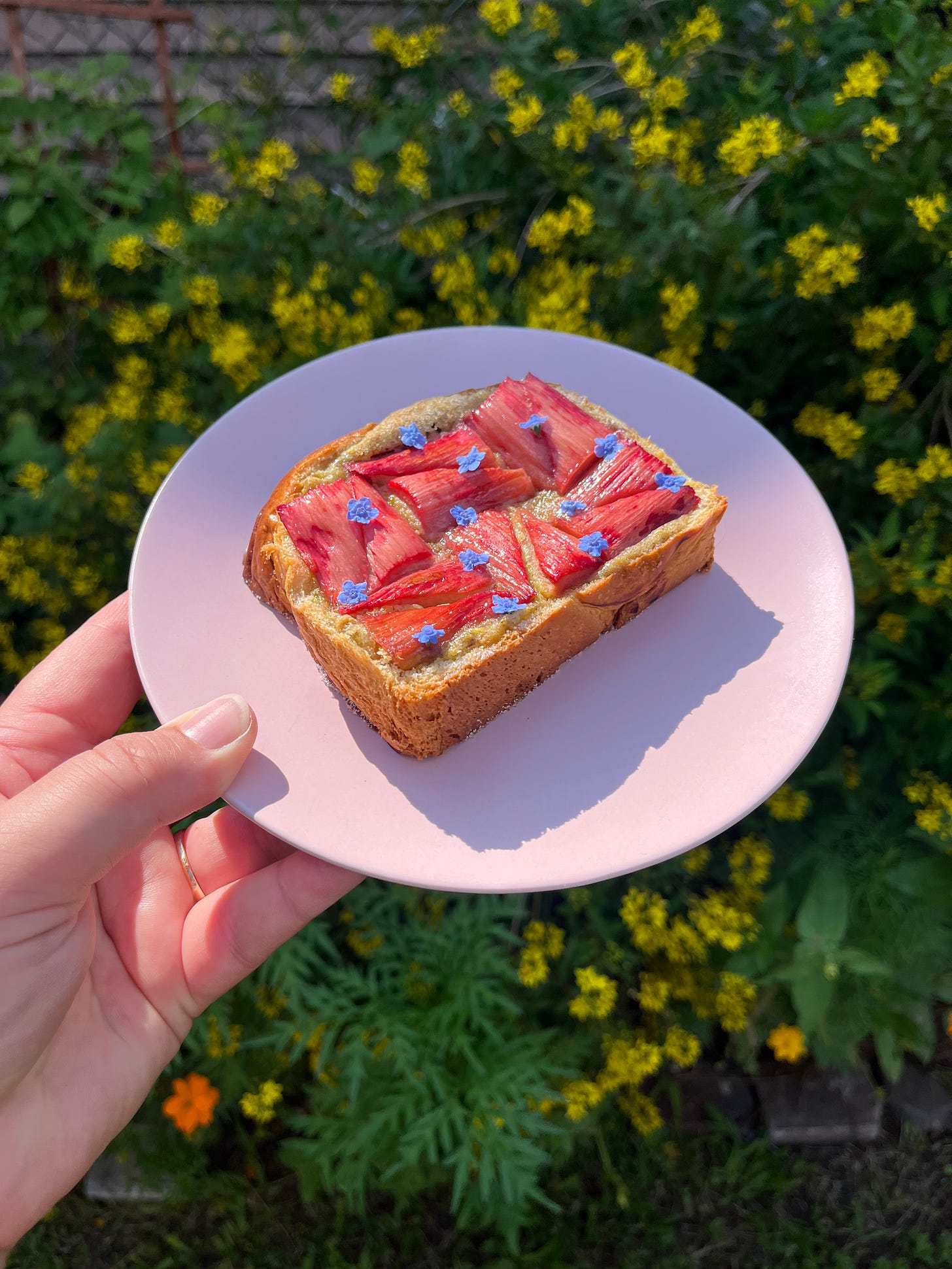
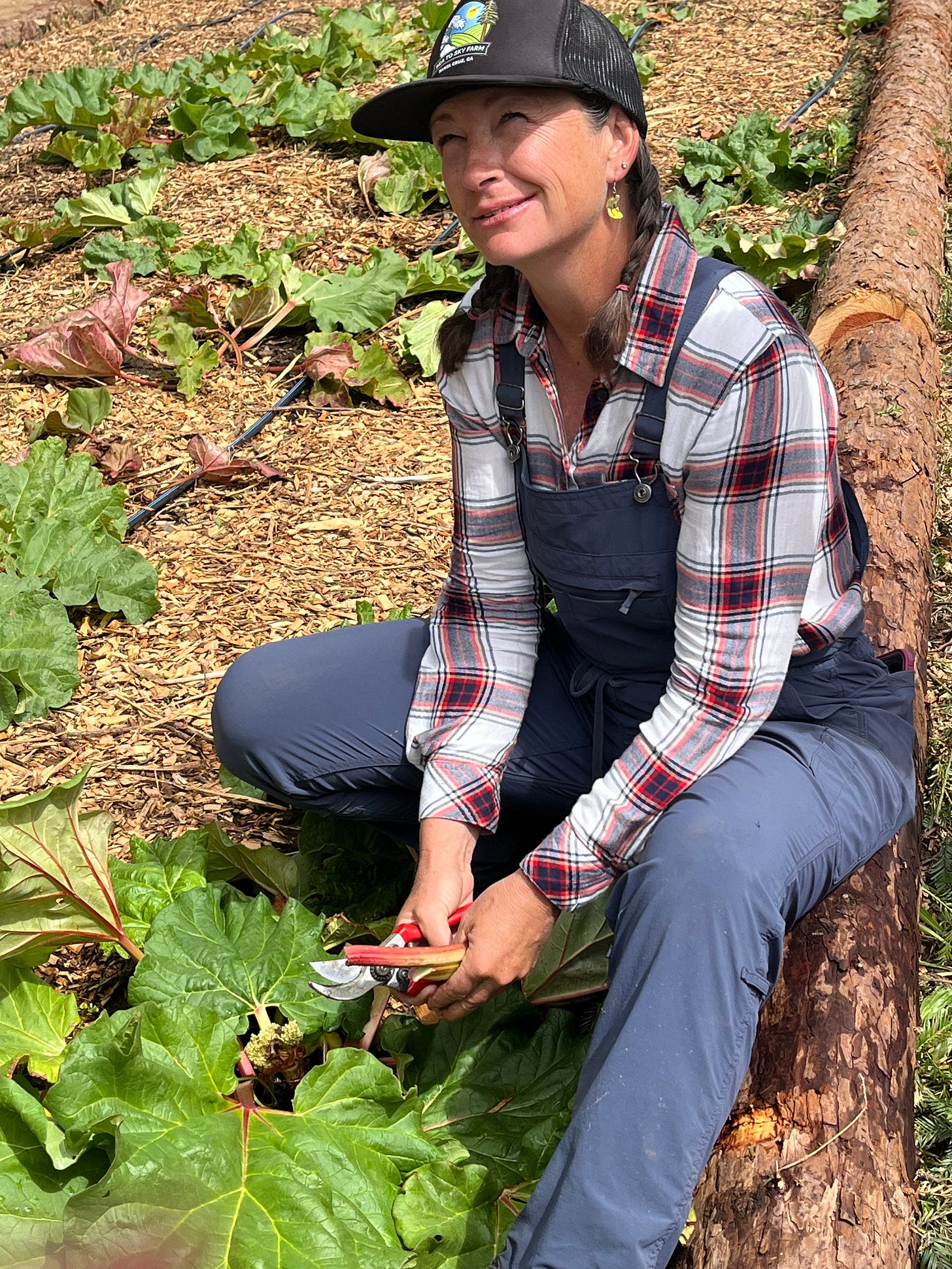
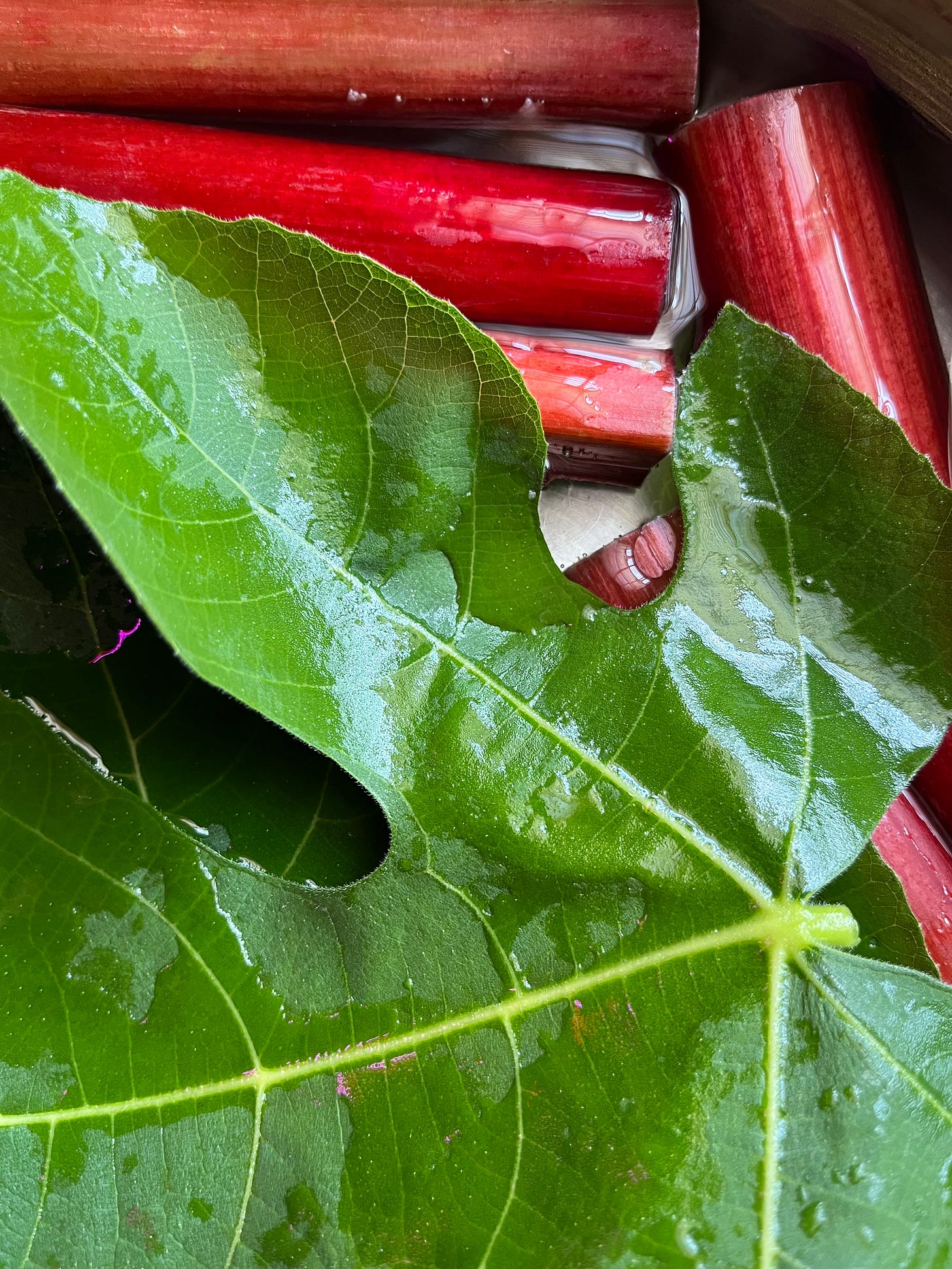
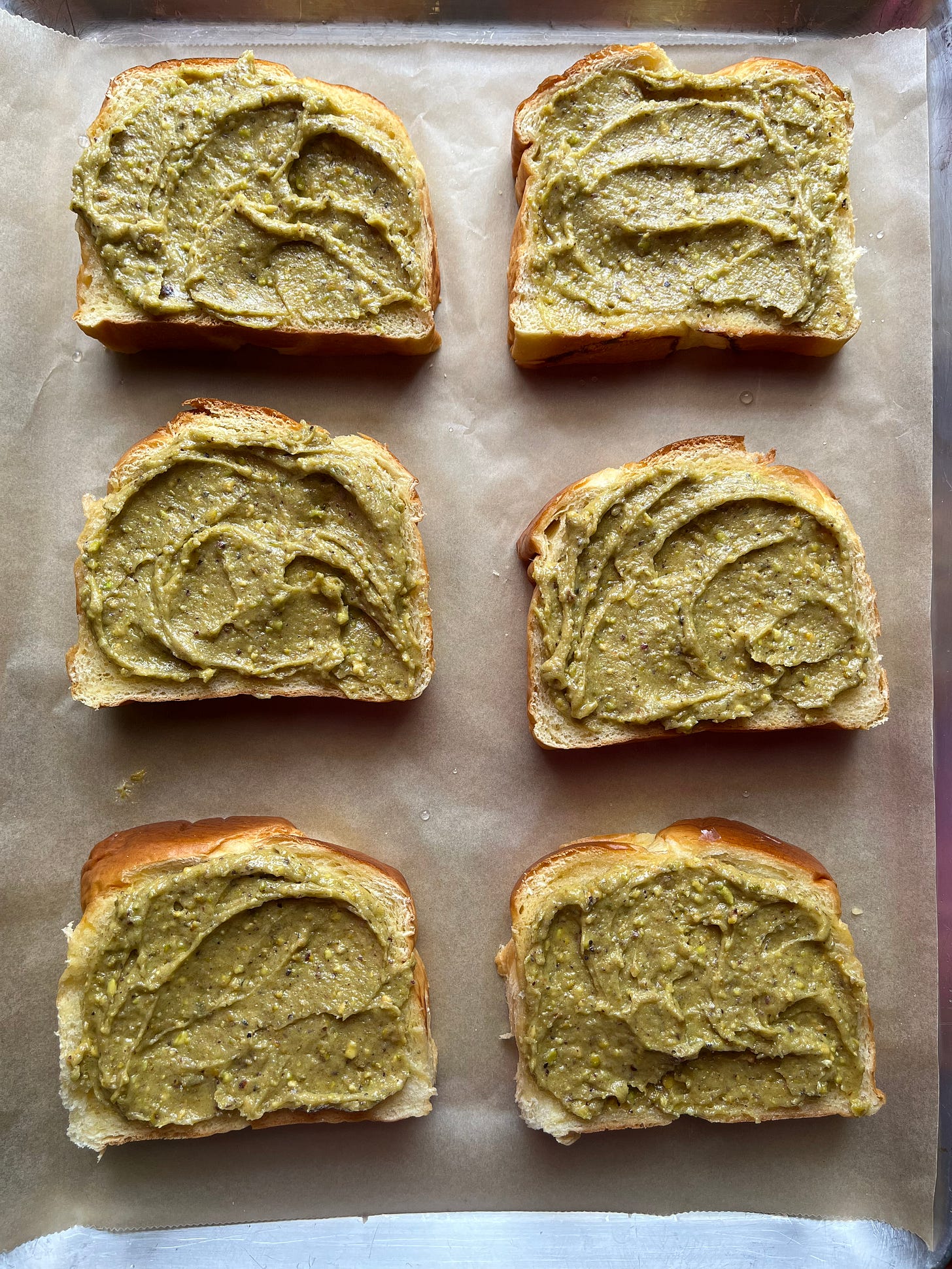
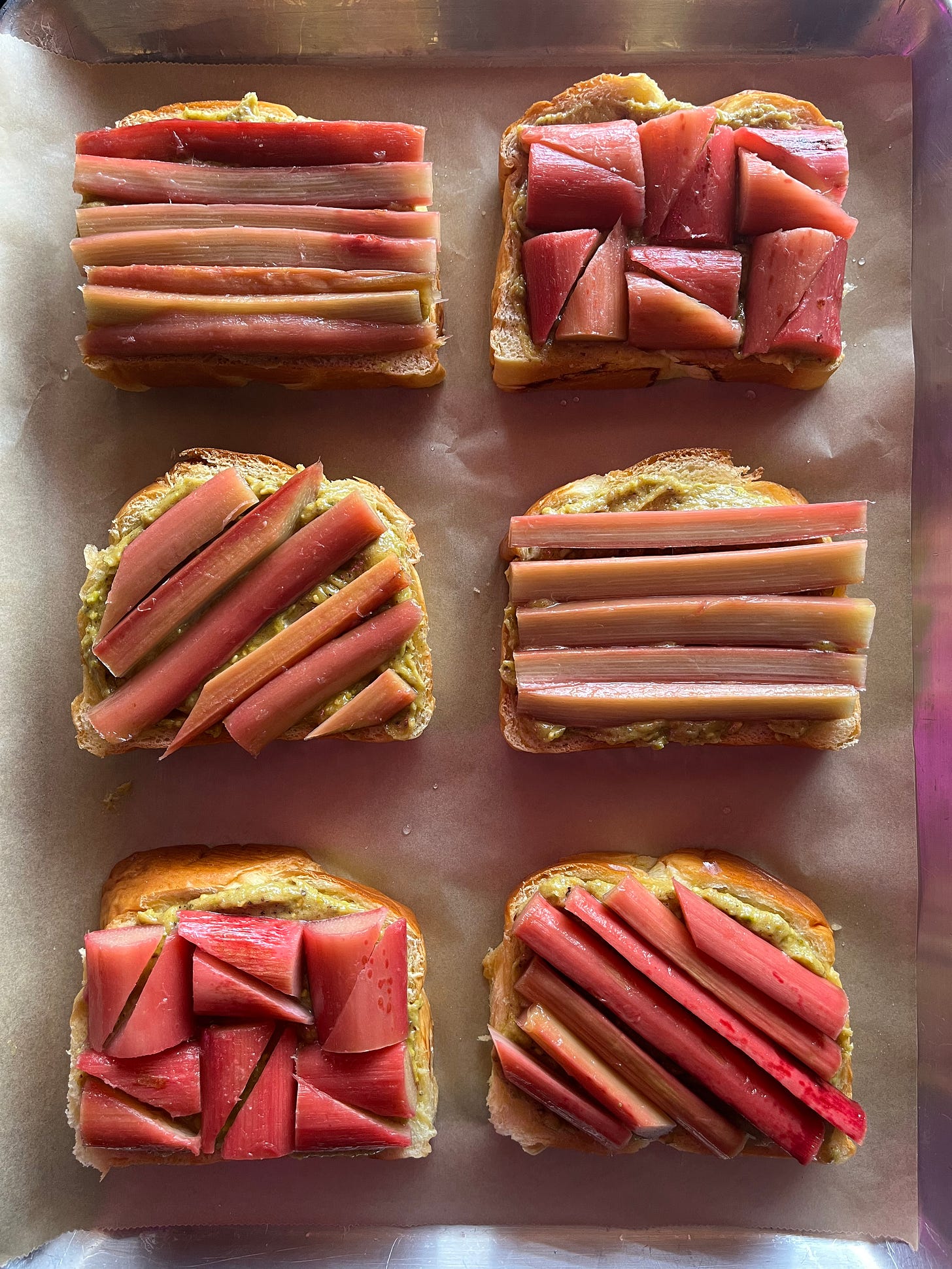
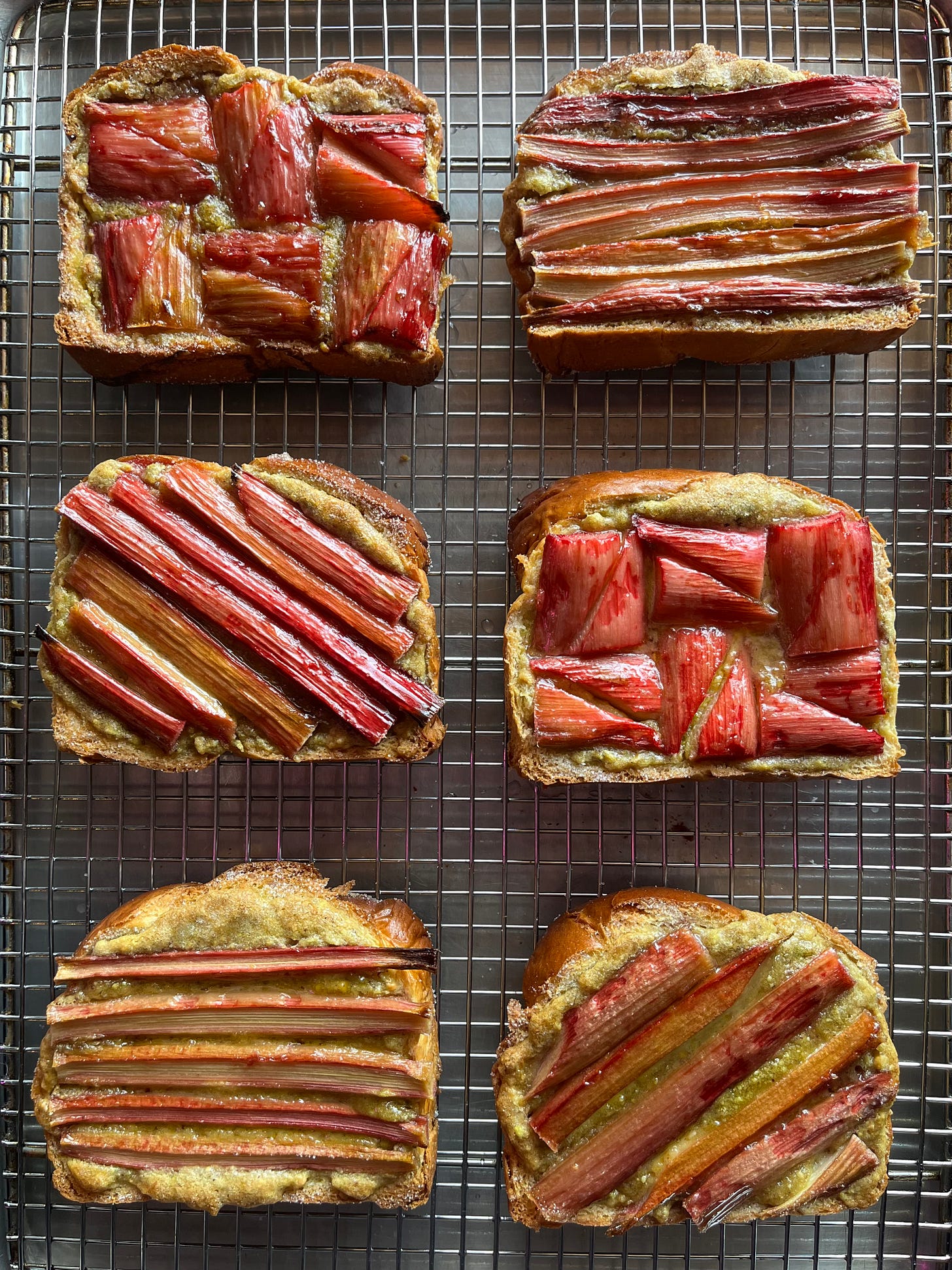
This bostock looks amazing. I also had my first thrilling California rhubarb pick last week when a neighbor offered me some from her front yard.
Unfortunately, I think California pistachio are on the BDS list. 😭 Which is unfortunate because they are my favorite nut.
https://globeistan.com/?p=112590
Sounds like an amazing trip with exploring, learning and politics. Thank you for sharing your adventure and this delicious looking recipe. Makes me wish I could walk into my grandfather garden and steal some rhubarb. Can’t wait to try it!